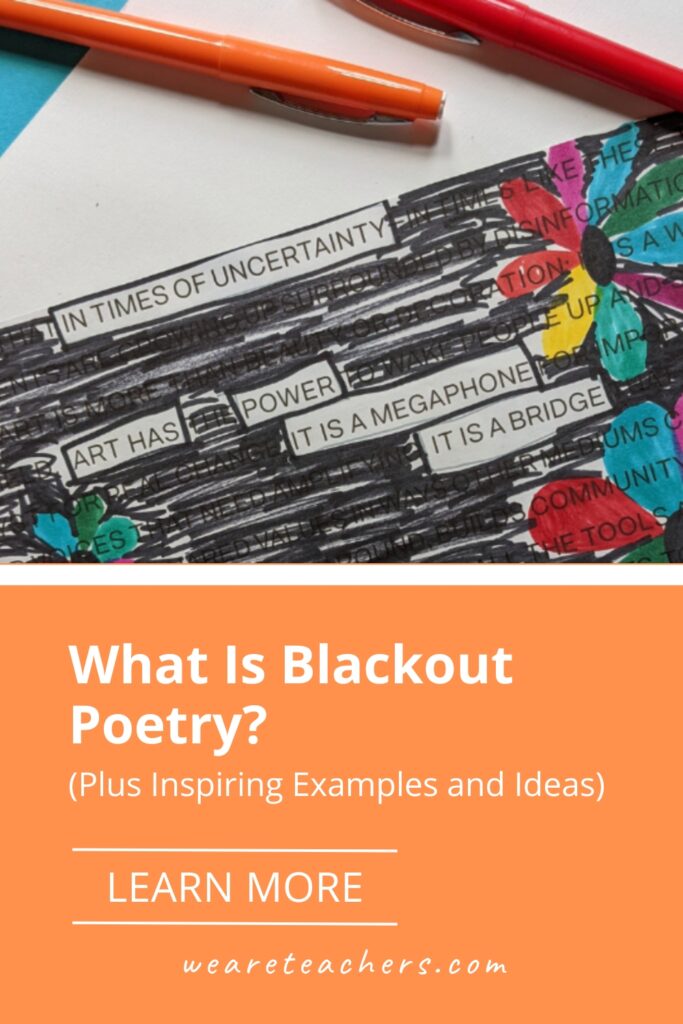You’ve probably already seen some of the stunning photos on Instagram and Pinterest featuring pages from magazines, newspapers, and old books mostly blacked out to reveal striking bits and pieces that make up unexpected poems. As writer Austin Kleon notes, “It’s sort of like if the CIA did haiku.” It’s actually called blackout poetry.
Blackout poetry is an inviting way for students to experiment with poetry. It’s a way to eliminate the stress of writer’s block because when it’s time to “take out your notebook and a pen,” the words are already there—all students have to do is find them!
Keep reading for step-by-step directions for creating blackout poetry, plus examples and ideas for using it in the classroom.
Who invented blackout poetry?
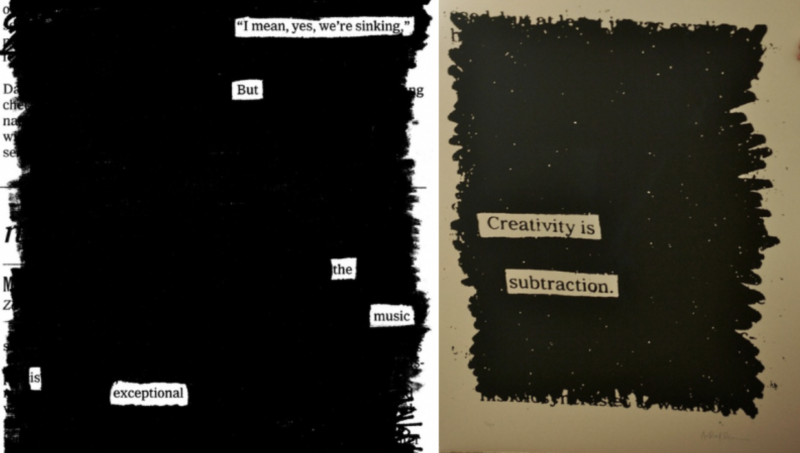
Image Credit: Blackout Poetry by Austin Kleon
While it’s a matter of some debate who invented blackout poetry, there’s little question that Austin Kleon popularized it.
Fighting writer’s block one day, he began to search out words in his newspaper and arrange them into poems, blacking out the words he didn’t want. He created more and more poems, began to share them online, started a movement, and then began to hear from fans and foes that maybe he didn’t invent the concept after all.
He began to research the history of creating poetry from others’ words and found there were 250 years of creators before him experimenting with similar methods, including Tom Phillips, William Burroughs, and Brion Gysin, among others. Check out his TED Talk for an intriguing take on how creativity flows from a mash-up of all the ideas that have come before.
What tools do you need to create blackout poetry?
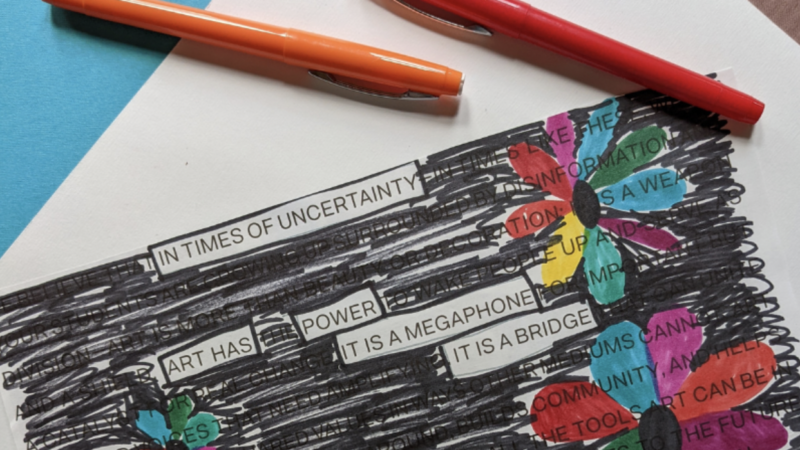
Image Credit: Betsy Potash
Ready to get started with your students? Begin by gathering pages of text from newspapers, old books, or magazines. You can even print digital pages from old books in the public domain, like Anne of Green Gables or The Great Gatsby.
Next, find yourself some pencils and black Sharpies or other black markers. If you want to give your students the option to illustrate their blackout poems between the words, then colorful markers or colored pencils could also help.
Of course, you can also create blackout poetry digitally. In that case, all you need is text on a Google Slide or a Canva project (and a lot of digital black rectangles).
How to create a blackout poem
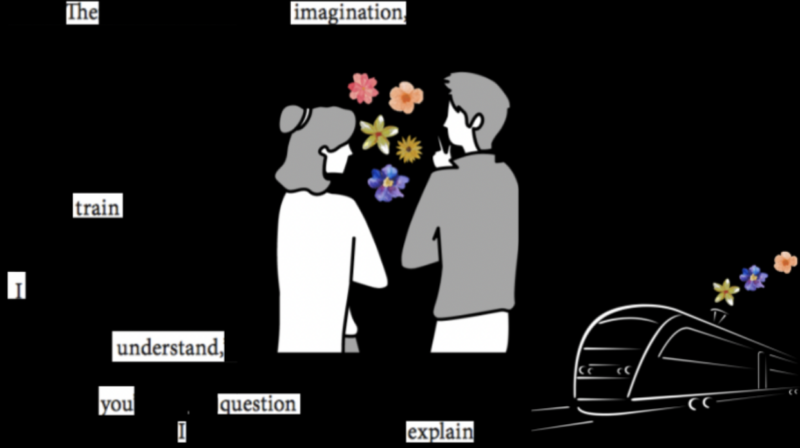
Image Credit: Betsy Potash
Blackout poetry is really straightforward to experiment with. Students will probably be surprised by how quickly they can create poems. Here are the five easy steps I first learned from educator John DePasquale to walk through in creating your own example before introducing the lesson.
Step One
Skim your page of words. Don’t read carefully, as the point is just to grab an idea from the words, not take them in. Find a word, phrase, or general theme that you like.
Step Two
Go through and lightly circle the words or phrases you might want to use, now that you have your idea. Grab a blank piece of paper and write them down in order, then read through them. Cross out the words you don’t want. If you need a few connecting words (like “a”, “the”, “it”, etc.), then dive back in and see if you can find them between the words you want to connect. You often can.
Step Three
Go back through your poem and boldly box the words you are keeping with a pen, Sharpie, dark pencil, etc. Erase any circles around words you don’t want.
Step Four
Read through your final poem. Sketch in a few images or symbols on your page that relate to the theme of your poem if you like. Now it’s time to start blackening. Using a Sharpie, pen, or pencil, black out everything that is not a word in your poem or one of your own sketches.
Step Five
Write out your final poem to display next to your blackout poetry. Add punctuation if you wish.
Digital Remix
To create a digital blackout poem, follow the same steps but use the “insert line” tool to underline words and a combination of many black rectangles to black them out. You can drop your imagery on top of your completed blackout poem, making it easier to interweave complementary art.
Teacher Resources
If you’d like some help with your first blackout poetry lesson, try one of these:
Taking Blackout Poetry to the Next Level
Pulitzer Center Blackout Poetry Lesson
Examples of blackout poetry
There are so many wonderful examples of student blackout poetry! One of my favorite displays comes from the students of Kristin Arbeene at Marlborough High School. As you can see, they added complementary artwork to their blackout poems.
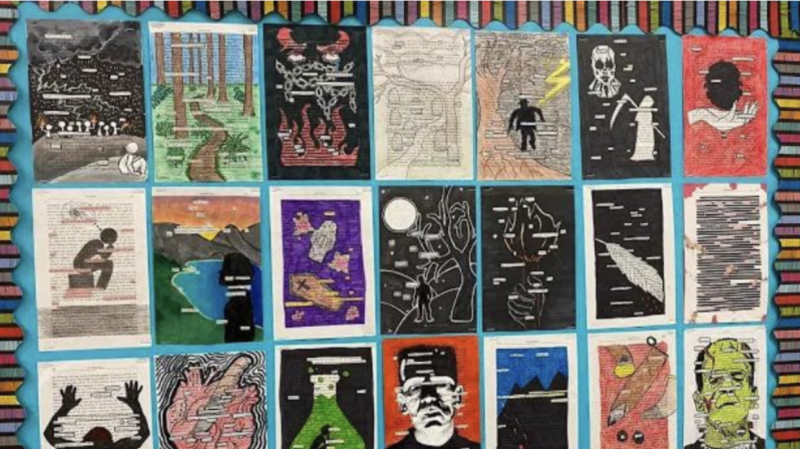
Image Credit: The students of Kristin Arbeene, Marlborough High School
You can find some great roundups of examples to show your students around the web. Here are two fun starting points:
Winners of The New York Times Blackout Poetry Contest
Spark Creativity: Blackout Poetry Roundup
More Teaching Ideas
Remember, it doesn’t take long to get started with this fun activity! You can mix it up by inviting students to create blackout poetry related to a text you’re reading, considering an essential question you’re exploring, or illuminating a theme you’ve been discussing. It also makes for a great spooky Halloween activity with Edgar Allan Poe’s text.
Whenever and however you launch into blackout poetry, be sure to save plenty of wall space for a lovely display!
Did you find these tips helpful? Check out these TED talks for poetry month for more resources!
Plus, share your favorite blackout poetry in the WeAreTeachers HELPLINE group on Facebook!


